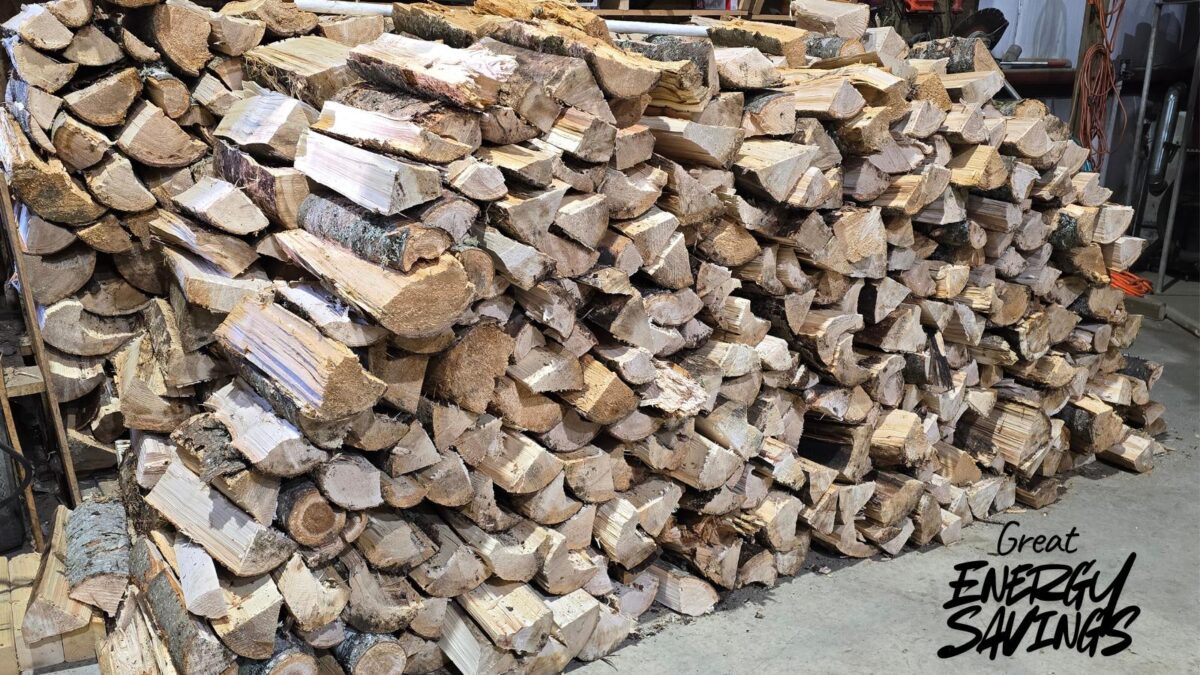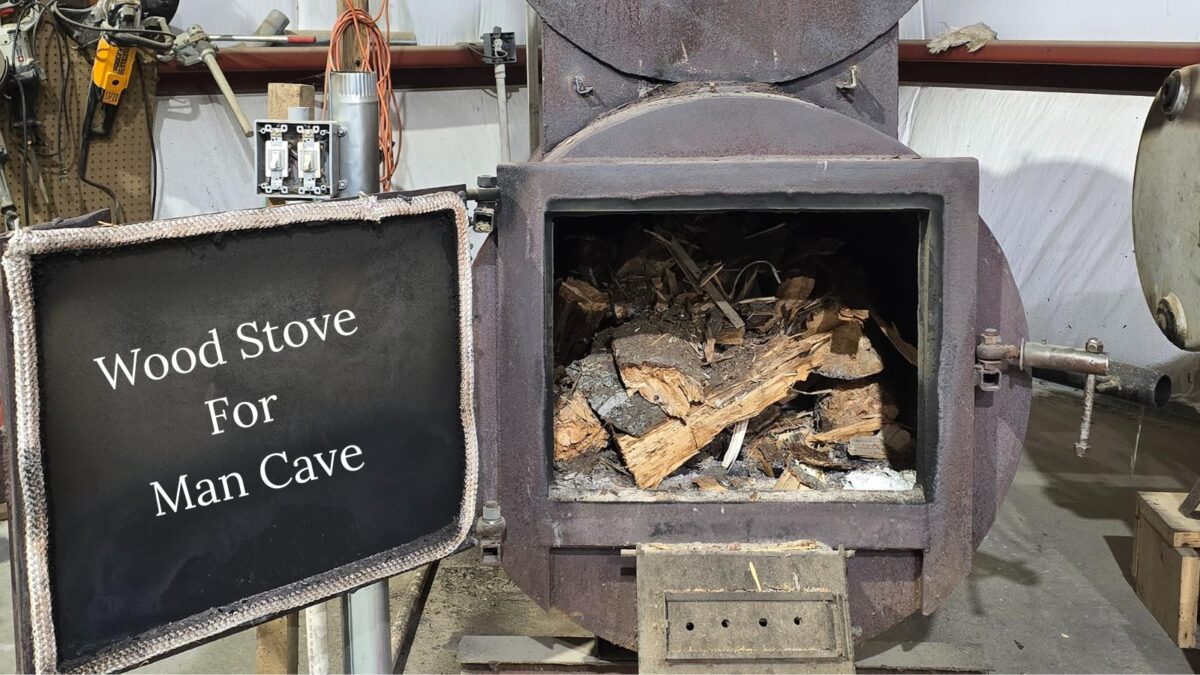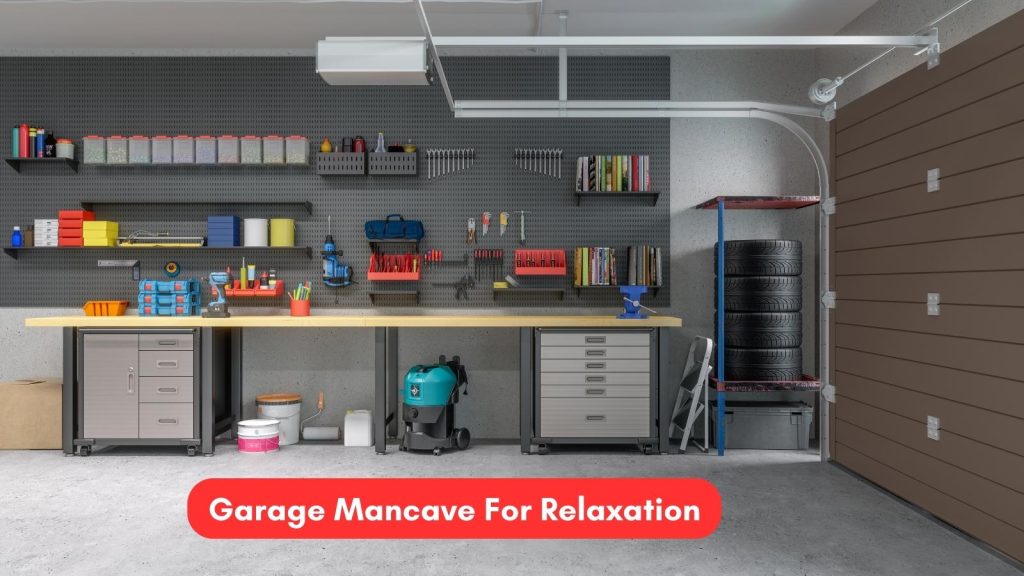Picture this. It is late, the house is loud, and you slip into your garage man cave. The game is on, tools are nearby, but your toes are freezing. A wood stove sounds perfect for garage heating: cheap heat, cozy glow, and an authentic hideaway feel.
But should you have a wood stove for a garage man cave? It can be a smart move only if you handle safety, code compliance, and insurance properly.
This quick guide, inspired by my husband’s garage man cave, walks through the pros, risks, and easier alternatives so you can pick the setup that fits your garage workspace, budget, and stress level.
Pros: Why a Wood Stove in Your Garage Man Cave Sounds Like a Great Idea
Cozy heat, rustic vibe, and an actual man cave feel
A wood stove provides effective garage heating, turning a cold garage into a warm hangout. The fire glow, soft crackle, and steady heat make the room feel more like a cabin than a storage space.
Game nights feel closer and more relaxed when you are not shivering in a folding chair. If you’re working in the garage as a side hustle space or home office, that comfort can help you focus, the same way a well-planned man cave office boosts productivity, as in this guide on how a man cave office increases productivity.
The vibe matters. It does not just heat the room; it sets the tone. It tells your brain, “This is my spot to work, think, or unwind.” Just be sure to calculate the proper stove size for the space.
Wood Stove For A Garage Man Cave Has Lower Heating Costs if you already have firewood
If you already cut firewood for your house or have easy access to a managed wood supply, a wood stove can lower heating costs compared to electric or propane space heaters. Stove brands like Jotul and Englander deliver heat with impressive efficiency, outperforming many alternatives.

You are trading higher power bills for sweat and time. Cutting, splitting, and stacking wood is real work, but many guys enjoy it as part of the lifestyle. It is outdoor exercise with a payoff you feel on cold nights.
For some owners, the trade-off is simple: more effort with wood, less money to the utility company, and the ambiance of a wood stove in a garage man cave.
Risks and Rules: When a Wood Stove For a Garage Man Cave Is a Bad Idea
Fire hazards in a garage full of tools, gas, and clutter
Garages often hold gas cans and gas vapors, stain, paint, oil, cardboard boxes, and sawdust. All of that can light up fast if it gets too close to a hot stove or flying sparks.
A safe setup means maintaining clearance from combustibles around the stove, using required heat shielding, using a non-combustible floor pad, and keeping no junk stacked nearby. Articles on wood stove safety, like this overview of heat shields and safety distances for wood stoves, stress the gap between heat and anything that can burn.
If you know your garage is always cluttered, or you cannot keep that safety zone clear, then the answer to “should you have a wood stove for a garage man cave?” is probably no.
Carbon monoxide and ventilation problems
Burning wood produces smoke and carbon monoxide. If your chimney pipe/flue or venting is wrong, those fumes can build up inside your garage.
You might not see or smell the danger. That is why a properly vented chimney, tight pipe joints, and working smoke and carbon monoxide detectors are non-negotiable.
A poorly vented combustion heating device can turn a relaxing space into a health risk, even if the fire looks fine.
Building codes, permits, and insurance limits with A Wood Stove for a Garage Man Cave
Many local building codes have strict rules about wood stoves in garages, including specific installation requirements. Some do not allow them at all, or only in particular setups.
Before you buy anything, check with your local building department to find out what is allowed and whether you need a permit. Also, call your insurance company to find out how a garage stove affects your coverage.
Fire discussions on forums like this garage wood stove thread often mention that skipped permits can mean denied claims after a fire. If the rules say no, or your insurer will not cover it, then the project is not worth the risk.
More brilliant Alternative Heating Ideas: Safe Ways to Heat a Garage Man Cave Without a Wood Stove
Electric and propane heaters for quick, simple warmth
These alternative heating options, such as plug-in electric heaters, radiant heaters, vented propane heaters, or a gas furnace, are popular choices for garage heating. They may cost more to run than wood, but they are usually easier to install and more code-friendly when used as directed.
Note that a vent-free unit can work in some setups, though it faces specific code limitations in many areas.
If you run a small business on the side or use your garage as a quick work zone, a propane heater or “plug it in and get warm” option often beats tending a fire, cleaning ashes, hauling wood, or giving up floor space to a bulky wood stove or pellet stove.
When shopping, calculate the necessary Btu output to match your space. Reviews of the best garage heaters can help you compare models and fuel types, including another solid propane heater choice.
Insulation upgrades so that any heater works better
Heat is only half the battle. If your garage leaks air at the door, has bare walls, or a thin ceiling, any heater will struggle.
Sealing drafts, adding basic insulation, and upgrading the garage door can make a huge difference in comfort by creating an insulated space. That improves efficiency, so your heater runs less, cuts heating costs, and maintains a stable average temperature. If your garage is a detached structure, these upgrades become even more critical.
Think of insulation as a one-time project that keeps paying you back, whether you use electricity, gas, or another safe heating source.
So, Should You Have a Wood Stove for a Garage Man Cave?
A wood stove for a garage man cave can be worth it only if you treat it like serious equipment. You need an insulated space, a properly installed chimney on masonry construction that meets the installation requirements, working detectors, and full compliance with local building codes and your insurance coverage. If any of that sounds out of reach, the safer answer is no.
For many men, a solid electric or gas heater, along with better insulation, will provide plenty of comfort with fewer headaches. Before you buy a wood stove, pause and weigh safety around an open fire or fireplace, cost, rules, stove size, Btu output, and how you actually use your garage to reach a comfortable average temperature.
Make the choice that keeps your man cave warm with innovative, legal, and worry-free garage heating.
If you need more ideas on man caves, check out my benable shopping list today!
Smart FAQs About Wood Stoves In A Garage Man Cave
Is it even legal to put a wood stove in a garage man cave?
In many places, a wood stove in a garage is allowed, but it must meet local building codes and fire regulations. Rules cover clearances, chimney height, floor protection, and whether the space is classed as a garage or living area.
Before you buy anything, call your local building department and your fire marshal. A quick phone call can save you a fine, a teardown, or a denied insurance claim later.
Will a wood stove in my garage affect my home insurance?
Yes, a wood stove can change how your insurer views your property. Many companies require that the furnace be UL listed, installed to manufacturer specs, and inspected by a pro. Some will ask for photos or an installation report.
If you install it without telling them, they may deny a claim after a fire. Always call your agent first, ask what they need, and get their approval in writing if possible.
Is a wood stove safe in a garage with tools, fuel, and vehicles?
It can be safe, but only with strict separation from anything that burns easily. That includes gasoline, paints, solvents, oil, and sawdust. Most codes require the stove and its ignition source to be at least 18 inches above the floor in a garage, since fuel vapors can pool at lower levels.
Keep a clear zone around the stove, usually 3 feet or more, with no storage, no gas cans, and no soft furniture touching that area. Add a rated fire extinguisher nearby and test your smoke and carbon monoxide detectors often.
Can I use a wood stove For A Garage Man Cave while working on cars or using power tools?
You should not run a wood stove when you are working with open fuel, flammable vapors, or spark-producing tools nearby. Gasoline fumes can travel across the floor and reach the stove, where they can ignite.
Plan your time. Warm the space before you open fuel systems or spray finishes, or use another heat source on heavy wrench days. For a garage where you constantly work on engines, a sealed combustion heater or another option can be safer.
How big of a wood stove do I need for a typical garage man cave?
You size a stove by BTUs and by how tight and insulated your garage is. If your garage is not insulated or has many air leaks, you either need a larger stove or need to improve the envelope first. Sound insulation often beats buying a huge stove that overheats the space.
Do I really need a professional to install the wood stove for a garage man cave?
You can install one yourself if local regulations allow it and you follow every detail of the manual. Still, a qualified installer is safer and often required for insurance and permits. They understand chimney routing, clearances, and how to reduce the risk of chimney fires.
If you do any part yourself, at least get a final inspection. A missed detail, like a wrong flue connector or poor roof flashing, can cause smoke problems, water leaks, or worse.
What are the downsides of using a wood stove in a garage man cave?
A wood stove needs storage space for dry wood, regular cleaning, and ash removal. You also get some smoke risk when starting fires or if the draft is weak.
If your garage is attached to the house, there is a higher concern about smoke or carbon monoxide entering living spaces. You also need to stay home while it is burning; unlike a thermostat, you cannot walk away from it.
How can I keep my garage man cave comfortable without constant tending of the wood stove?
Combine the stove with sound insulation, sealed doors, and some backup heat. Weatherstrip the garage door, insulate the ceiling, and seal gaps around outlets or windows.
Some owners use the wood stove as the central heat when in the garage, then a small electric heater to maintain a base temperature at other times. That way, you get the charm and savings of wood without feeling chained to the fire all day.




